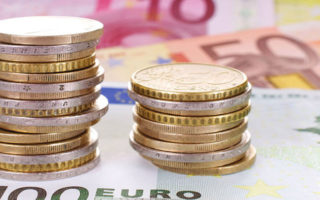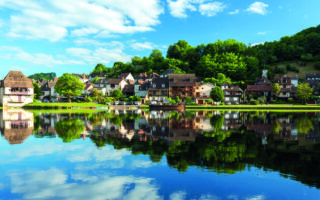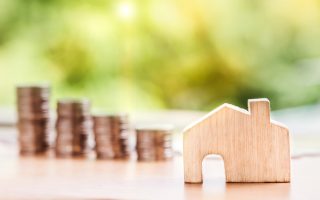French Property Location Guide: Vercors
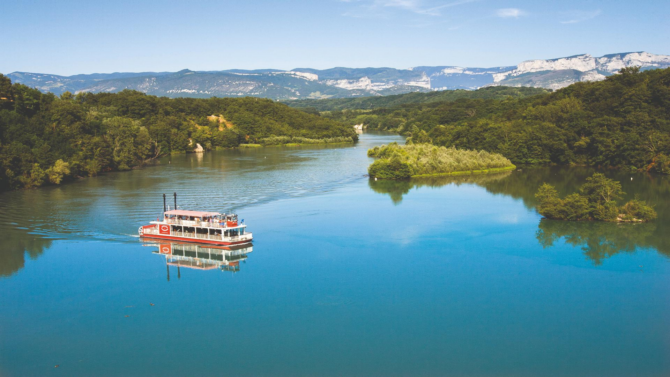
Breathe deep and enjoy the fresh mountain air of the Vercors regional park – and you may find your perfect home in one of the charming villages, says Carolyn Reynier…
magine a place where you ski in winter and go caving, rock climbing or hiking through magnificent landscapes the rest of the year; a place where the less energetic can simply breathe in pure mountain air and enjoy spectacular views. You’re imagining the southern Vercors. We are in the 206,000-hectare Parc Naturel Régional (PNR) du Vercors in northeastern Drôme in the Auvergne-Rhône-Alpes region. This is middle mountain country lying at the foot of the wild natural reserve of the upper Vercors plateaux to the east, with the verdant valleys of Royans to the west.
The massif was home to the Vercors Maquis during the Second World War and the German army and Luftwaffe inflicted terrible loss of life and damage in their efforts to eliminate it. The Musée de la Résistance en Vercors, the national necropolis at Vassieux- en-Vercors and the Memorial at 1,300m overlooking the Vassieux plain and the Vercors massif tell the story. There’s an abundance of flora and fauna here – you may see eagles, marmots, chamois in the Vercors forest and meadows, subterranean caves and wide open spaces. It’s a great place for family cross- country skiing (ski de fond) and there’s some downhill (ski alpin) too, with resorts at Herbouilly, Font d’Urle and Col de Rousset. We’ll travel from the Bourne gorges south through the five communes – St-Julien-en-Vercors, St-Martin- en-Vercors, La Chapelle-en- Vercors, Aignan-en-Vercors and Vassieux-en-Vercors (did I mention we were in the Vercors?). For larger centres, drive northeast to Villard-de- Lans over the border in Isère or west to St-Jean-en-Royans; for urbanites, there are Grenoble or Valence. We’ll finish our journey with a look at property in subprefecture Die and the surrounding Diois countryside.
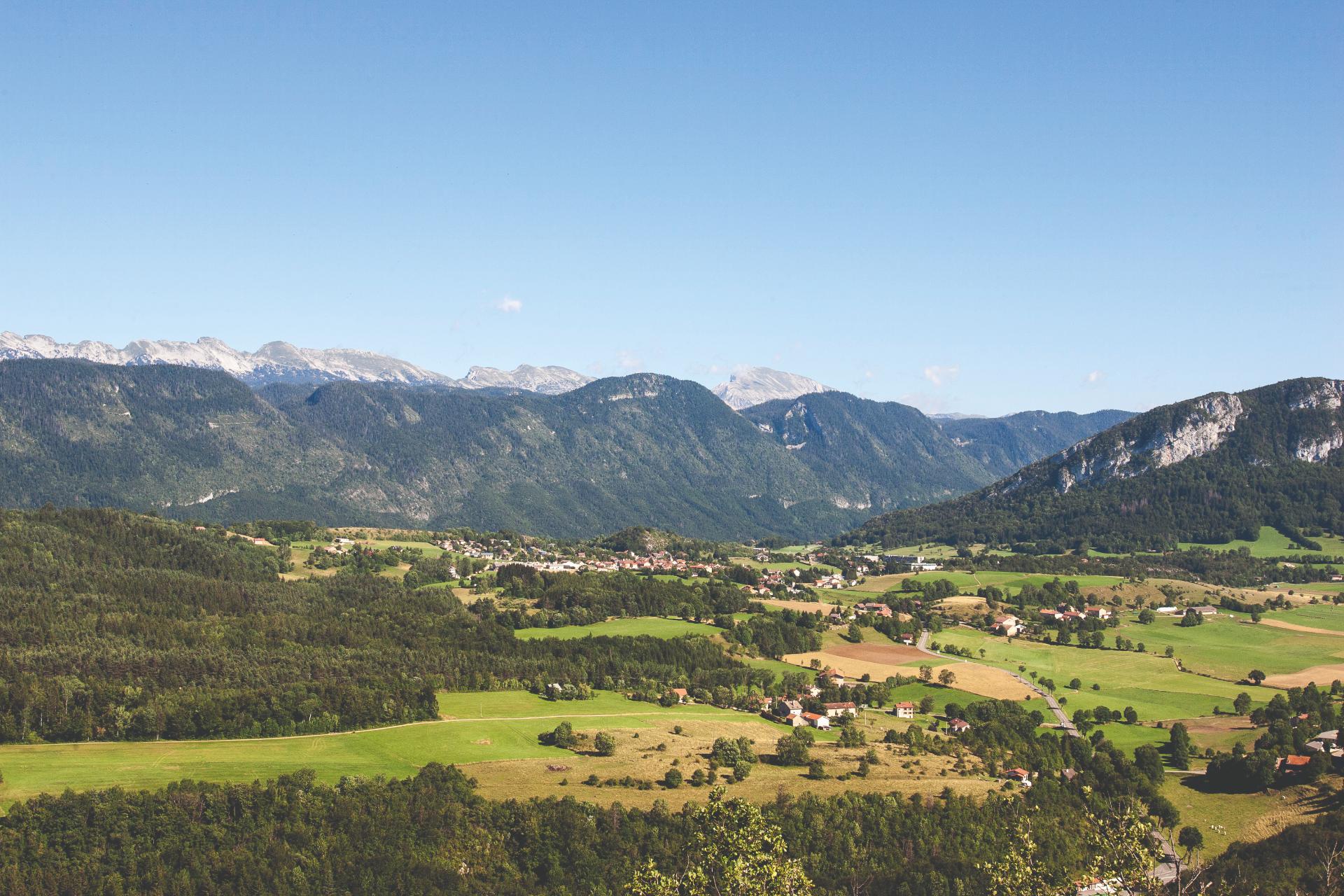
La Chapelle-en-Vercors, one of the area’s five communes, © L. PASCALE / DRÔME ATTRACTIVITÉ
MASSIF MOMENTS
I speak to Annelise Gillet at Vercors Sud Immo in La Chapelle-en-Vercors (population 770). Nature, pure air, breathtaking landscapes, a diversity of outdoor activities winter and summer, tranquillity and security – this defines the Vercors Sud, she says. La Chapelle is the chef-lieu of the five villages on the southern Vercors plateau and is perched at an altitude of 945m in the heart of the massif. Enclosed by steep rocky elevations, it is accessed by several tourist routes, including the 1,700m Grands Goulets tunnel (the Drôme’s longest.) The village was rebuilt after the conflict so in the centre you’ll find post-war terraced stone village houses – two or three storeys high, with or without outside space – some of which have been converted into apartments. “The architect wanted to achieve uniformity so used the same local pale beige stone,” explains Annelise.
She recently sold a renovated property for €315,000 and a smaller property requiring renovation for €105,000. There’s a Bâtiments de France perimeter around the classified medieval Notre-Dame de la Chapelle church so if you buy within it, you’ll need a permit to do any external work.
ECO HOMES
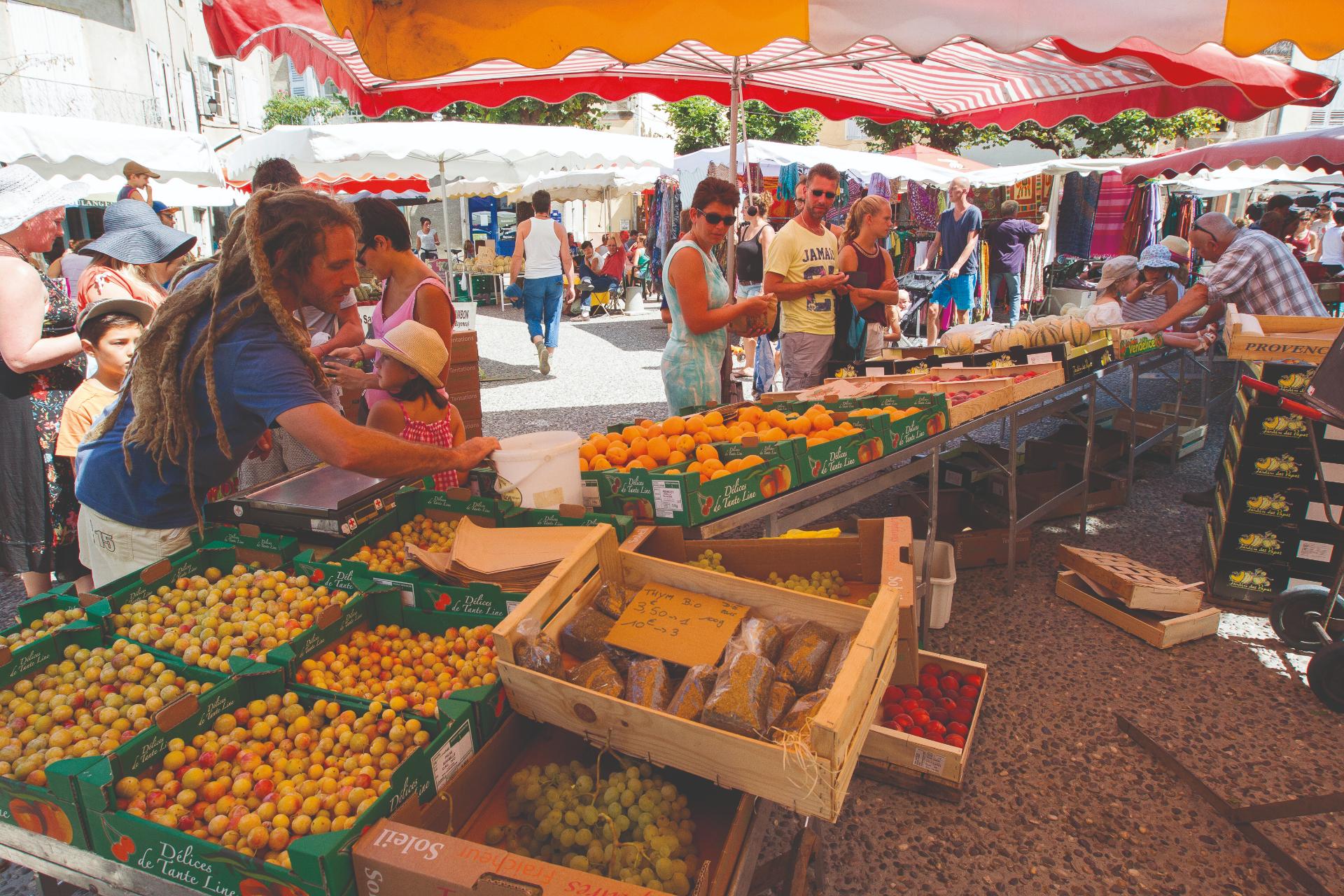
The bustling produce market in Die is the place to get your fresh fruit and veg, © L. PASCALE / DRÔME ATTRACTIVITÉ
Detached houses with gardens are within walking distance of shops, services and the market, or in more isolated locations, and sell for around €450,000. “It depends on whether the house needs to be restored, its characteristics, if it has some land, a view,” says Annelise. Today, new houses are often ecological timber-framed constructions, built by artisans on the plateau. “They’re very much in demand.”
Large old stone farmsteads and barns for renovation in surrounding hamlets are popular with purchasers who often want to convert them into accommodation and income-earning gîtes. Prices may be between €100,000 and €240,000. For example, a couple of years ago, Annelise sold a large farmstead for renovation with 160m² of living space, a 68m² loft and a 260m² barn for €177,200.
The other villages offer a similar range of properties. St- Martin and St-Julien have more hamlets and so more isolated houses and farms. A former 1899 four-bedroom maison de maître in a St-Martin hamlet is on the market for €320,000 (Espace Immo 38). You can buy a 1900 five-bedroom converted stone auberge with mountain views at St-Agnan for €239,000 (Dr House Immo).
SNOW BUSINESS
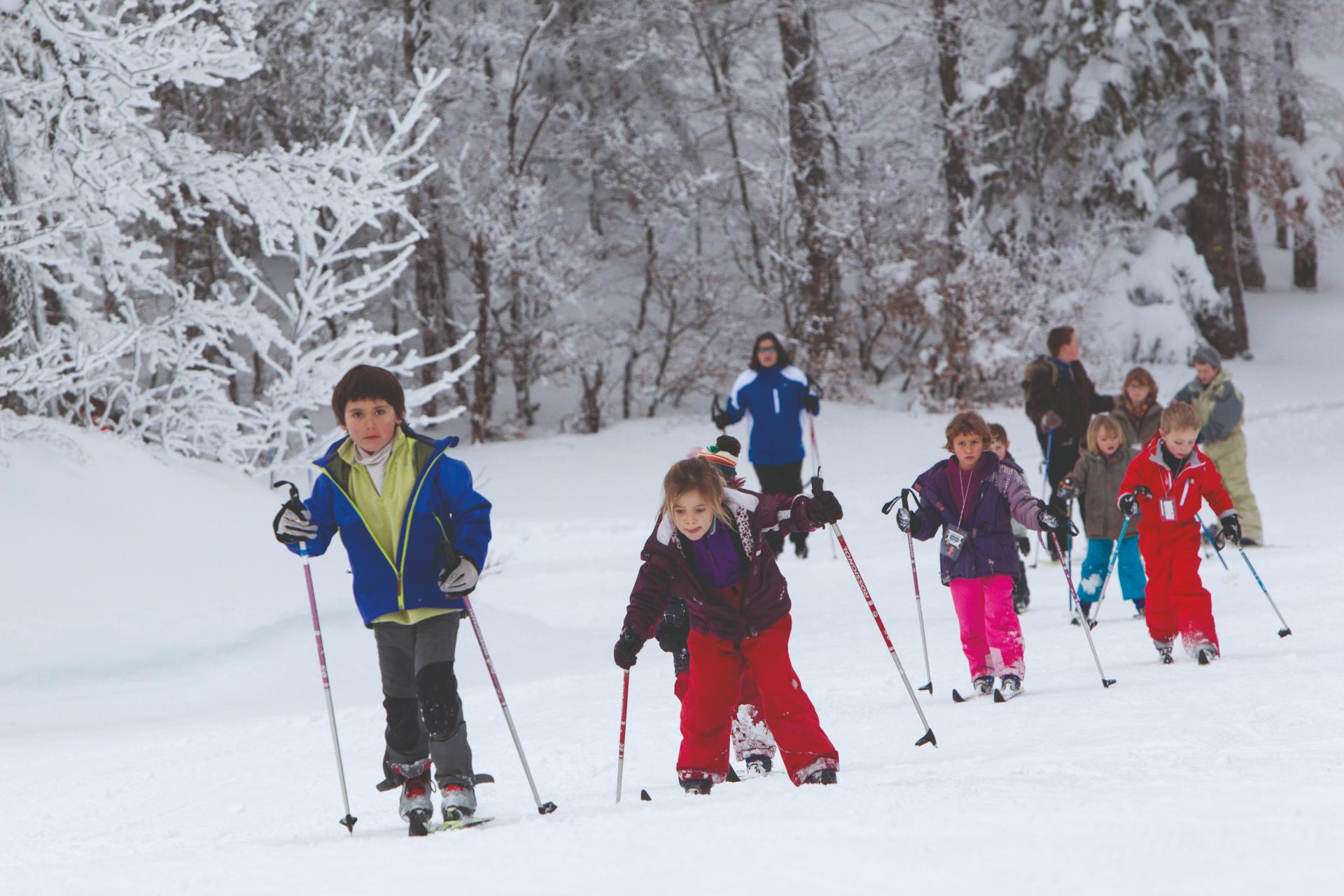
This area is a great place to take the family cross-country skiing – ski de fond, © L. PASCALE / DRÔME ATTRACTIVITÉ
Herbouilly, a large ski de fond resort above St-Martin, is linked with Corrençon-en-Vercors in Isère and offers 153 kilometres of Nordic ski paths. There’s also cross-country and some downhill skiing at Font d’Urle above Vassieux-en-Vercors. “These are family resorts ideal for teaching children to ski,” says Annelise. “You ski among the pine trees, c’est génial.”
Further south, in the little ski resort of Col de Rousset, studios sell for €30,000-€60,000, depending on the equipment they come with. She says that although a few folk live up there on the mountain year round, it’s really a holiday resort. “If it’s not the season, it’s a bit isolated and far away from everything.” But if that’s what you’re looking for…
Although La Chapelle-en-Vercors is popular with purchasers because it has more shops and services, there are buyers who prefer St-Martin and St-Julien because you’re nearer to Grenoble. The north Vercors, north of the Bourne gorges, has become very expensive so people working in Grenoble and wanting to live in the Vercors look further south. Prices tend to remain similar across the southern Vercors plateau, although Vassieux may be slightly cheaper because it’s “really a very hard climate in winter”. That said, a “super belle maison” on the Vassieux plateau will sell for the same price as at La Chapelle.
There’s a market for both annual and seasonal lets. People work in Grenoble, Valence, locally and now from home. After Covid, Annelise had high demand from folk wanting to come to the Vercors. “When it’s very hot, nights are pleasant because we’re at 900m,” she explains. The post- Covid boom, which pushed up prices, has since calmed down a little, but le télétravail means people can now live in the country and take the train (3.5 hours) once a week to Paris. “We’re 50 minutes from the Valence TGV, which helps enormously,” she says. What are the plus points of the southern Vercors plateau? “We’re surrounded by nature, we don’t have all the problems you have in towns,” she says, “and yet we’re not remote. We’re in the mountains and we have nature and zénitude. In summer we have all the hiking, running and mountain biking activities then in winter skiing, and we’re close to the larger resort of Villard-de-Lans.
“We have everything we want. I’ve lived here for over 25 years, I wouldn’t leave for anything,” she says.
The small dynamic town of Die lies at the gateway to the Drôme Provençale at the foot of the Vercors regional park in the Diois countryside of lavender fields and vineyards.
Ludovic Benini at Diois Immobilier tells me that in the small historic centre you can find old stone terraced houses, some converted into apartments. Expect to pay €220,000-€260,000 for a town house with terrace. Depending on size, a property requiring renovation may sell for about €150,000-€200,000. One of the latest apartments on his books, requiring complete renovation, is priced at €100,000, “but it’s negotiable around €80,000”, Leave the town and you come to lovely villas, often cycling distance from the centre. You can buy an attractive one with some land for €500,000 or so. “In the Diois countryside, you’ll find village houses and villas at slightly lower prices than in Die,” says Ludovic.
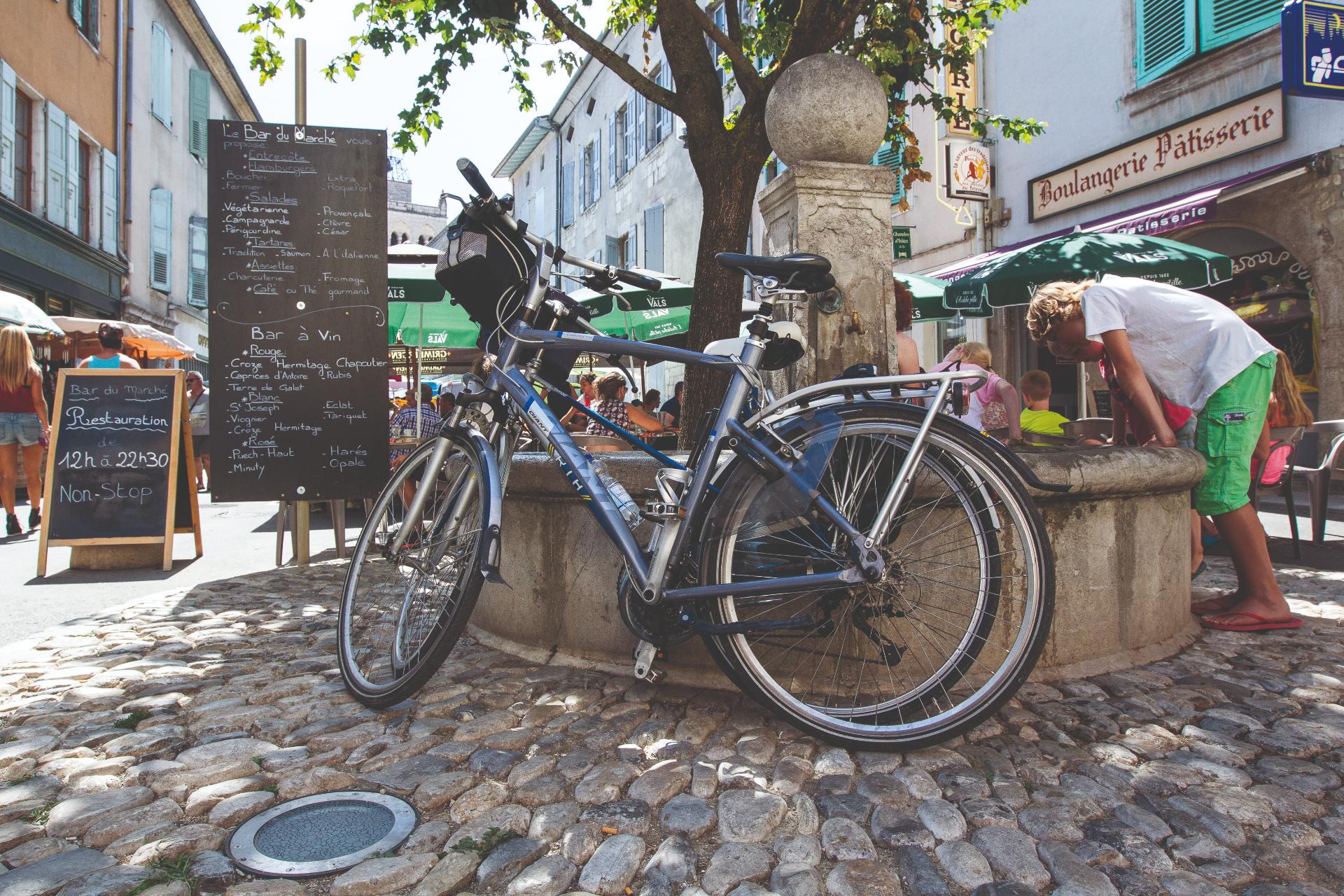
Cycling is popular too – you can cycle into the centre of Die or explore further, © L. PASCALE / DRÔME ATTRACTIVITÉ
TOP SPOTS
Popular villages worth a look include Marignac-en-Diois and Ponet-et-St-Auban west of Die, and Châtillon-en-Diois (a Plus Beaux Village de France), to the southeast. There’s a great restoration project here – a three-storey 11-room village house, with renovated ground-floor apartment, barn with loft, two cellars… think chambres d’hôtes, family home, apartments (€198,000, Olivier Romanet Expertimo).
The advantages of Die and the Diois are “nature, ecology, hikes, the sun”, says Annelise. The Col de Rousset allows young and old to benefit from the joys of la glisse, skiing down 26 runs for all levels, plus other snowy activities. And everyone can enjoy the spectacular views of the Diois valley and the Vercors offered by the panoramic chairlift. Don’t forget, the Loi Montagne obliges private vehicles to be equipped with approved snow tyres or chains from 1 November to 31 March.
I’m writing these lines sipping a glass of cool, naturally pétillant Clairette de Die Tradition. When you’ve found your ideal property, you’ll need some in the fridge to celebrate your purchase. In the vineyards, you’ll recognise the tight bunches of small white muscat grapes used to make it, balanced with clairette blanche to reduce the sweet muscat taste and add finesse.
Today there are three other appellations: sparkling Crémant de Die, still Coteaux de Die, and red, white and rosé Châtillon-en-Diois. Sit down to some Diois lamb or maybe a River Archiane trout; with some raw goat’s milk Picodon, a mild Vercors-Sassenage blue made from the milk of three mountain cattle breeds on your cheeseboard; along with a few Grenoble walnuts.
vercors-drome.com
diois-tourisme.com
lesstationsdeladrome.fr
parc-du-vercors.fr
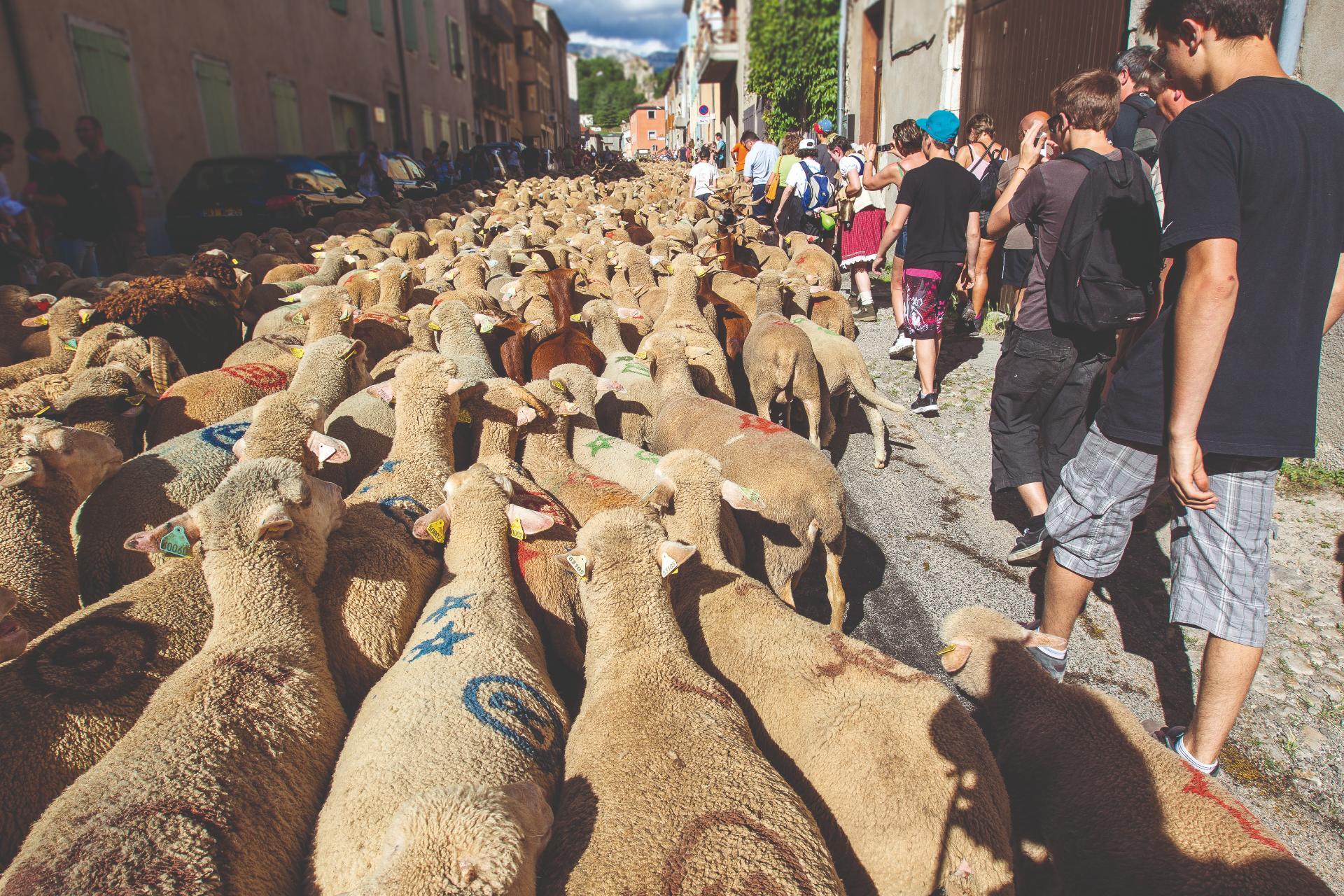
The Fête de la transhumance in June, © L. PASCALE / DRÔME ATTRACTIVITÉ
Looking for more like this?
Every issue of French Property News delivers in-depth regional buying guides, sound and trusted advice from leading experts, inspirational real life stories, renovation tales and lots of lovely properties to browse.
Lead photo credit : A river boat glides serenely on the Bourne in summer, © L. PASCALE / DRÔME ATTRACTIVITÉ
Share to: Facebook Twitter LinkedIn Email
More in Location guide, property, Vercors
Leave a reply
Your email address will not be published. Required fields are marked *


